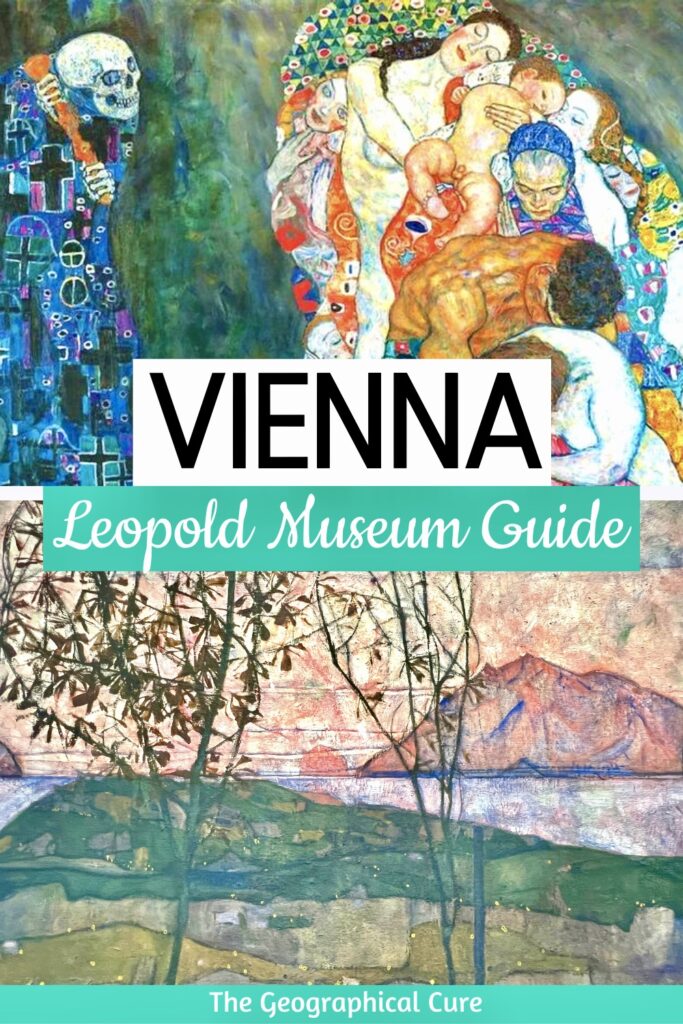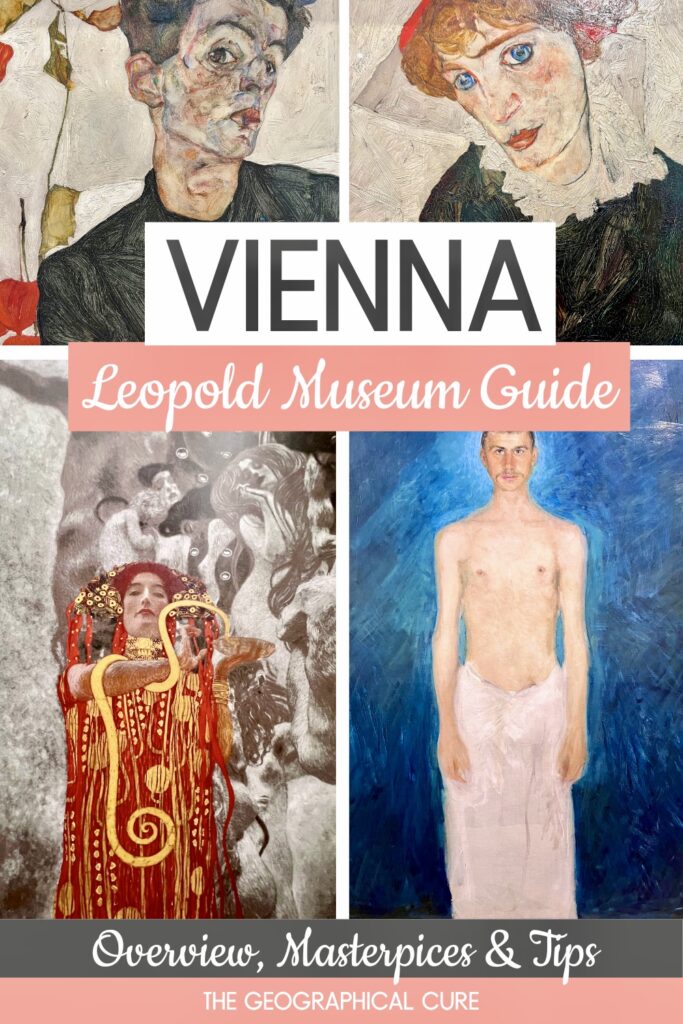The Leopold Museum is home to a heavyweight collection of Viennese Secession and Expressionist artworks, making it one of my personal favorites Vienna museums.
An ophthalmologist named Rudolph Leopold assembled the impressive array of artworks. In 1994, he sold the collection to the Austrian state for a substantial amount. In return, Austria built the Leopold Museum to house the artworks.
The holdings feature seminal works by renowned artists such as Gustav Klimt, Oscar Kokoschka, Richard Gerstl, and Egon Schiele. Notably, the museum boasts the world’s largest Schiele collection, comprising 44 oil paintings and 180 drawings.
Spanning Schiele’s artistic career from 1907 to 1918, the collection includes portraits of friends and lovers, stylized nudes, landscapes, and numerous self-portraits.
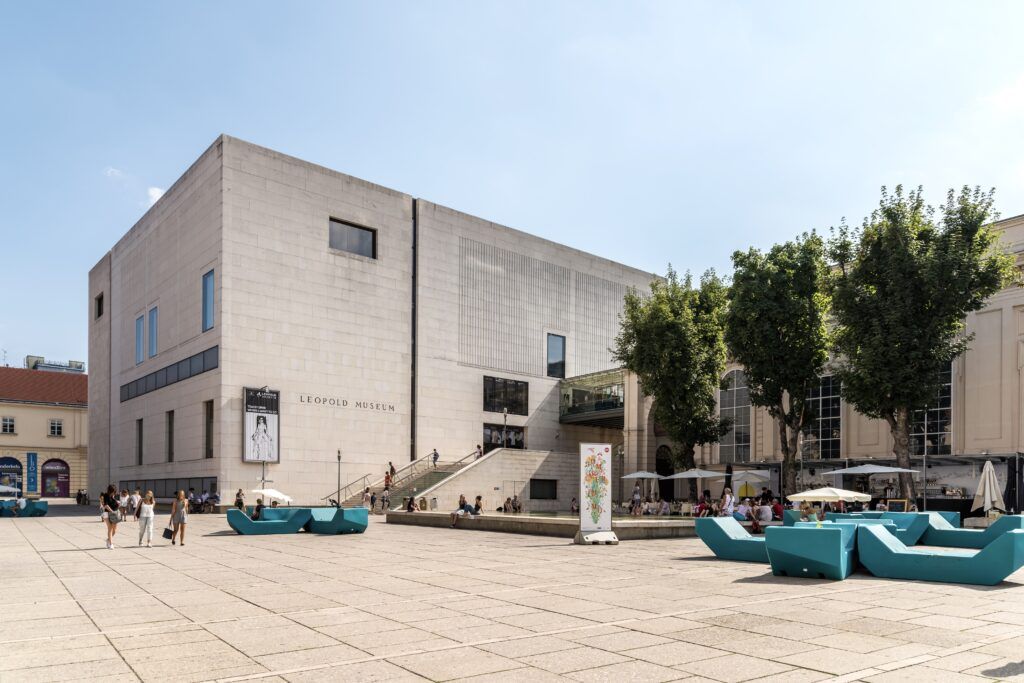
The museum is also home to several masterpieces and furniture by the luminaries of the Vienna Secession. Aside from the Schieles, the most famous piece is Gustav Klimt’s Death and and Life.
>>> Click here to pre-book a skip the line ticket
Leopold Museum At A Glance
The mid-size museum covers four floors and only displays Austrian art. There are information panels in both English and German.
Once you enter, head right for the stairs or lift to the upper levels. Begin your tour on the forth floor and then descend. Everything is in chronological order.
Here’s an overview of what you can see in the museum:
4th Floor: Works of Historicism and early Vienna Modernism from around 1900. There are early Klimts and copies of his paintings for the University of Vienna, which were destroyed during WWII.
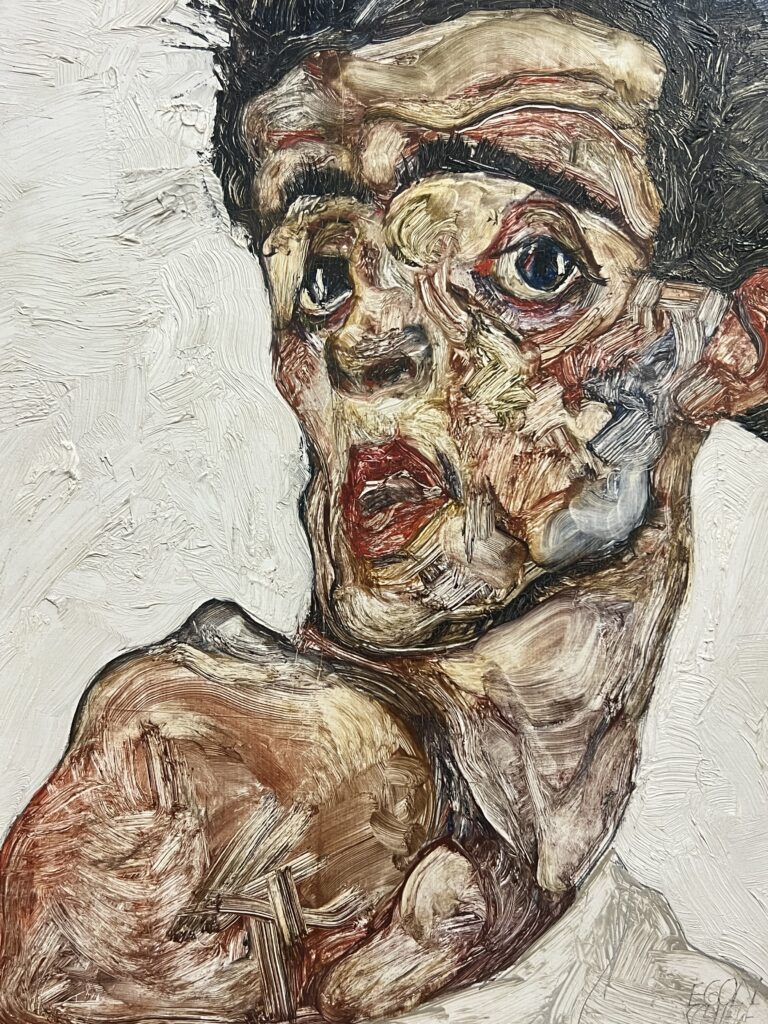
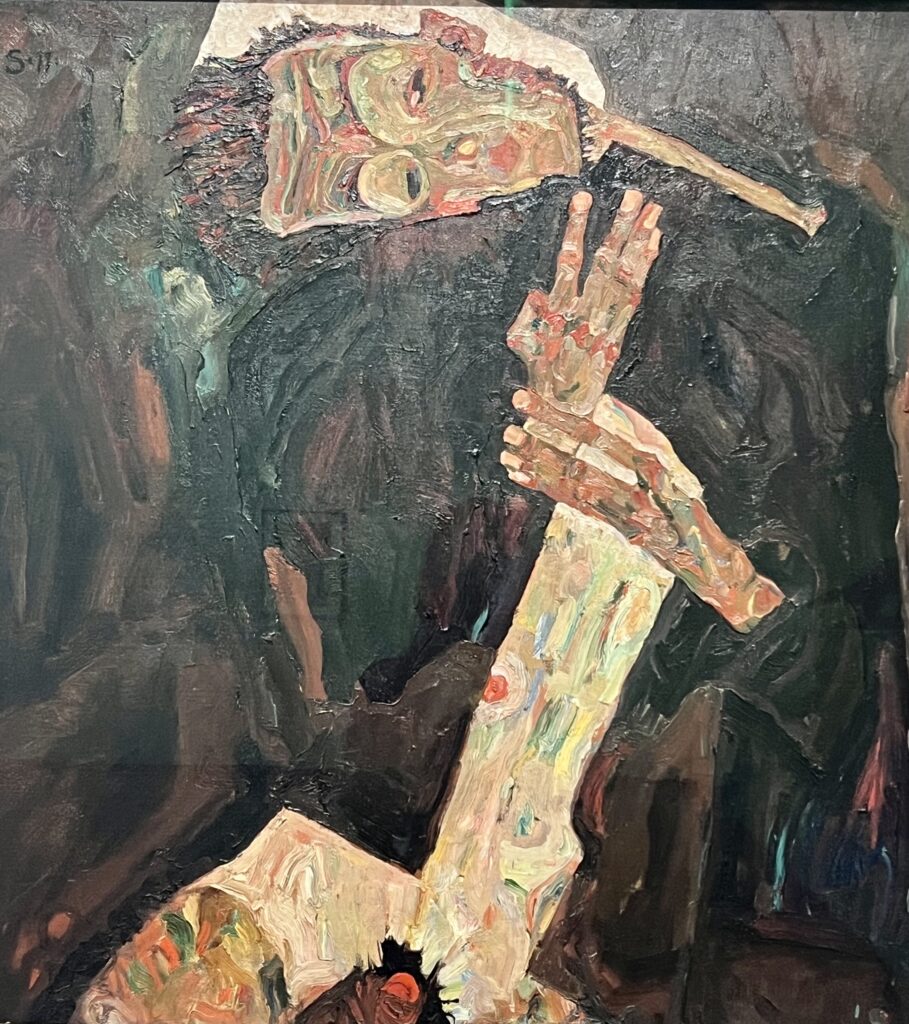
3rd Floor: Rooms are divided by theme/artist. You will see arts and crafts works by preeminent artists and architects, including works by Koloman Moser, Adolf Loos, and Otto Wagner. This is also where you will also find paintings by Gerstl, Schiele, and Klimt’s Death and Life.
2nd Floor: This floor houses the museum cafe, the Leopold Cafe. It’s lovely and you should consider taking a lunch break there. This is where the museum shop is as well.
1st Floor: The ground floor houses post WWII modern works. You’ll find some obscure Viennese artists and works by rising female stars.
Basement: This is where the temporary exhibitions are displayed. When I was last visited, there was an excellent show on Expressionist Max Oppenheimer. This is also where the restrooms and lockers to store your bags are located.
For more information on Secessionist theory and artists, check out my guide to the Vienna Secession Movement and the Vienna Secession Museum.
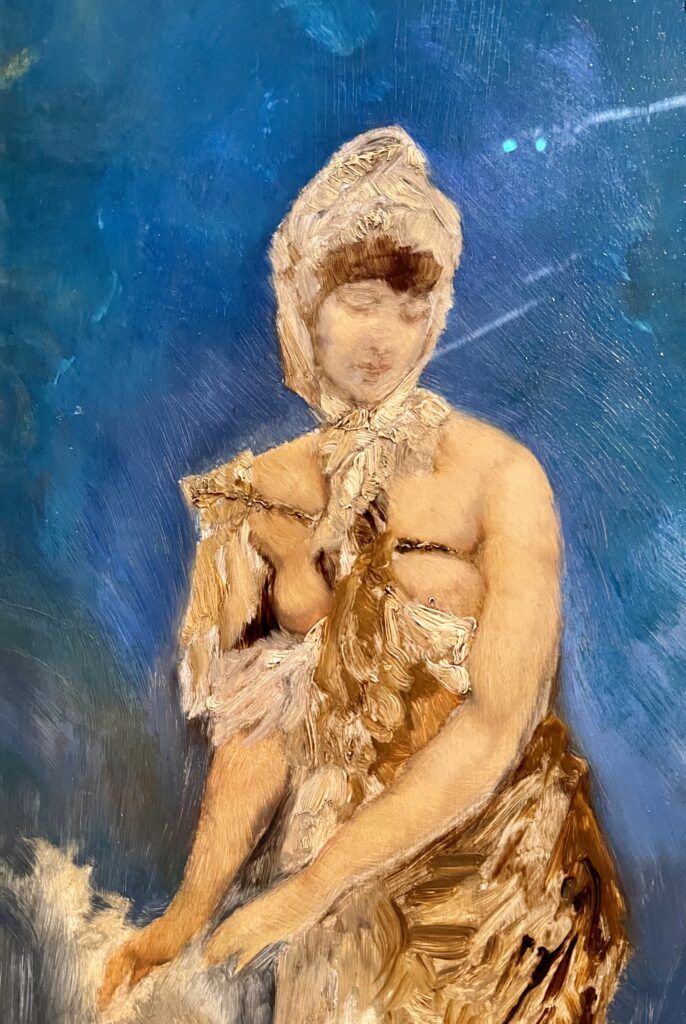
Guide To The Leopold Museum: What To See
Here are the highlights and things you can’t miss at the Leopold Museum.
1. Hans Makart Paintings
To help illustrate the radical nature of their endeavor, the Leopold Museum begins its displays with they heyday of Historicism and several Hans Makart paintings.
Makart was a leading figure in the city’s art scene of the late 19th century, a period dominated by Historicism. He was known as the “prince of painters” and the “magician of color.”
Makart had a distinctive theatrical style, depicting historical and mythological subjects. His art left a significant imprint on Vienna’s culture, impacting fashion, interior design, and even stage productions.
But it was also the jumping off point for the Vienna Secessionists. They wanted to break away from the conservative dogma of Historicism and create a new, modern Austrian style.
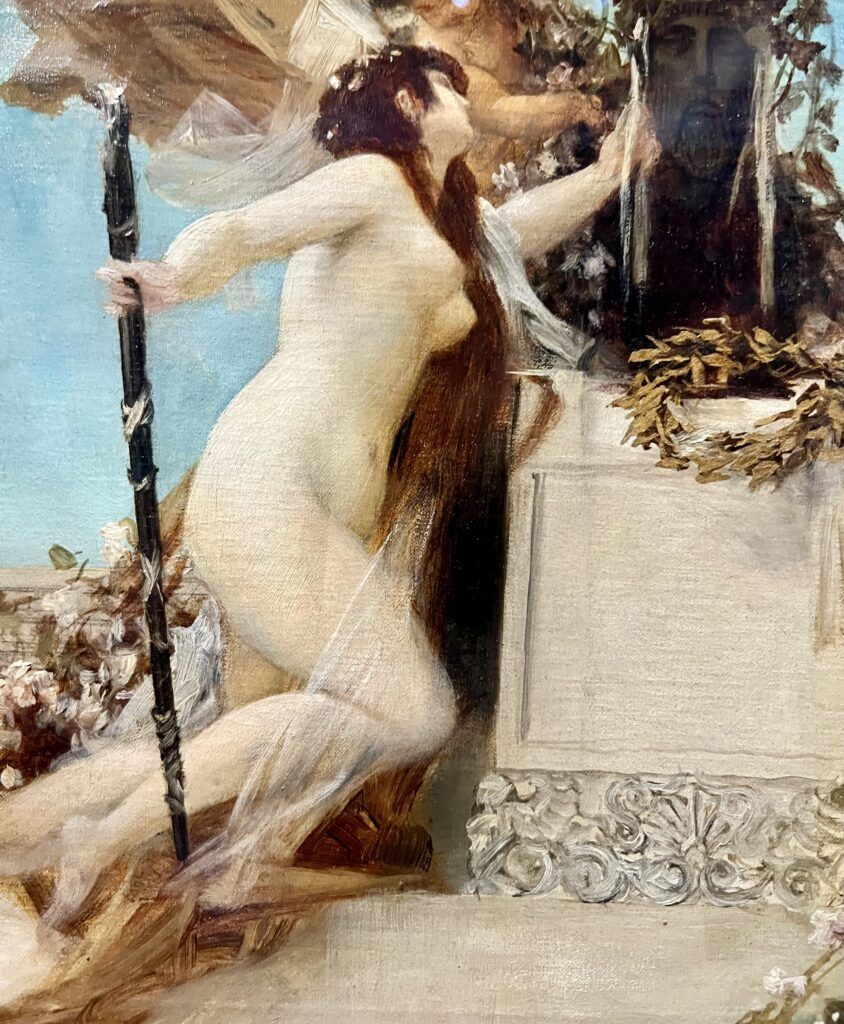
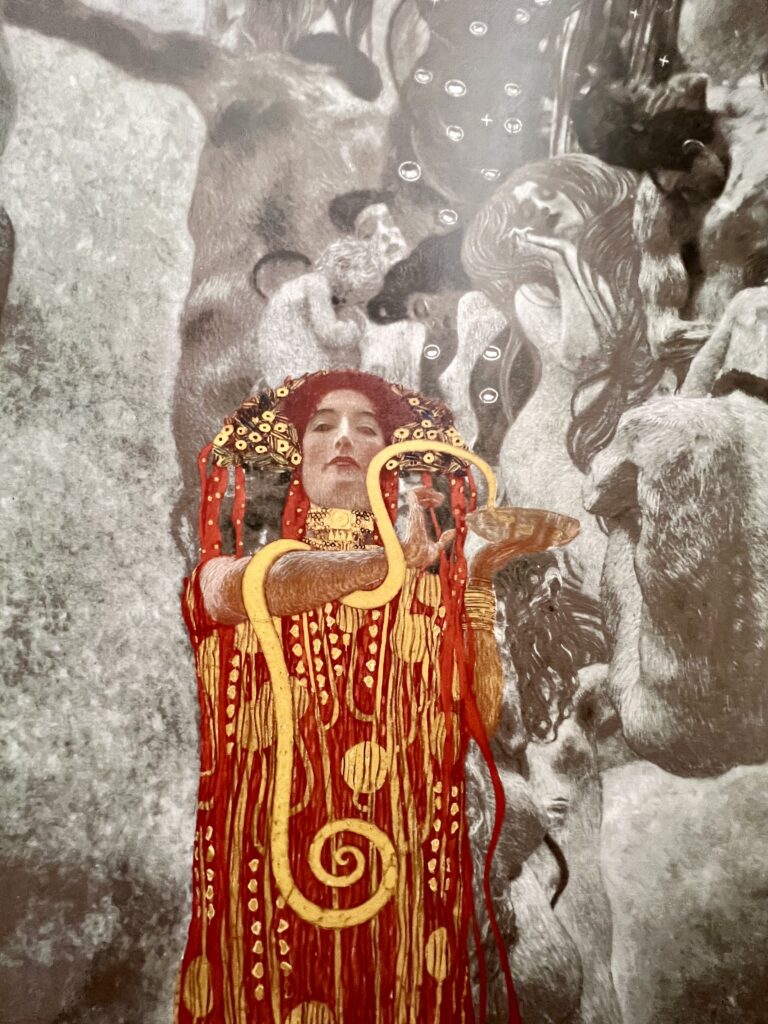
2. Early Klimts
You may not know this, but Klimt began his career as a successful academic painter and fan of Makart. Klimt painted murals, ceilings, and other decorative elements in public buildings, including the Burgtheater and the Kunsthistorisches Museum.
But he quickly became disillusioned with Historicism. In particular, in 1894, Klimt was commissioned to create “faculty paintings” for the ceiling of the university’s Great Hall. The themes related to philosophy, medicine, and jurisprudence.
However, Klimt’s paintings were met with controversy and criticism for their unconventional and provocative style, which included nudity and allegorical symbolism. They were rejected and Klimt refused to modify them, saying “enough censorship.”
After that, in 1897, he led the Secessionist group that broke away from the academy to found a new style of modern art. Klimt moved into the “gold period” that he is so famous for.
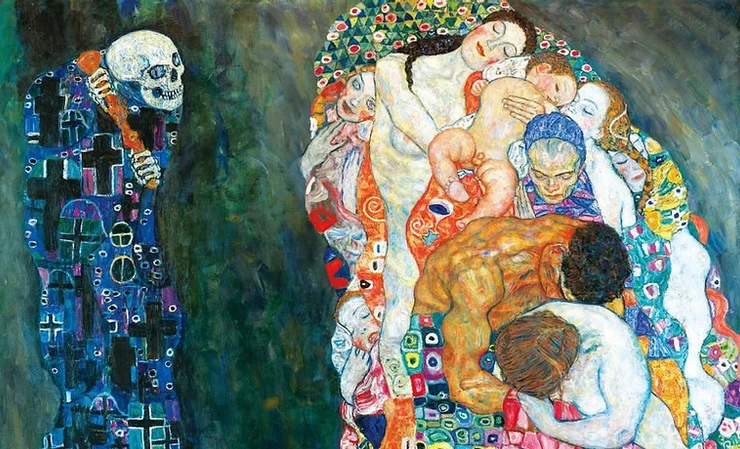
3. Klimt, Death and Life
Klimt considered Death and Life his best painting. It’s an allegory showing the human cycle of life, painted when Klimt was at the height of his powers.
In the painting, Klimt used a bold composition with contrasting colors to address the life cycle. The composition is divided into three distinct parts, each laden with symbolism.
On the left, you see the solitary and hunched figure of death, shrouded in a coat of blue ornaments. Except for his white skull, he almost fades into the dark gray background.
On the opposite side, “life” is depicted as a cluster of cocooned figures. They embody the essence of life in its various stages. Although death is clearly preying on them, they are oblivious to his presence.
Between these two powerful elements lies a mysterious and shadowy space, effectively bridging the realms of death and life.
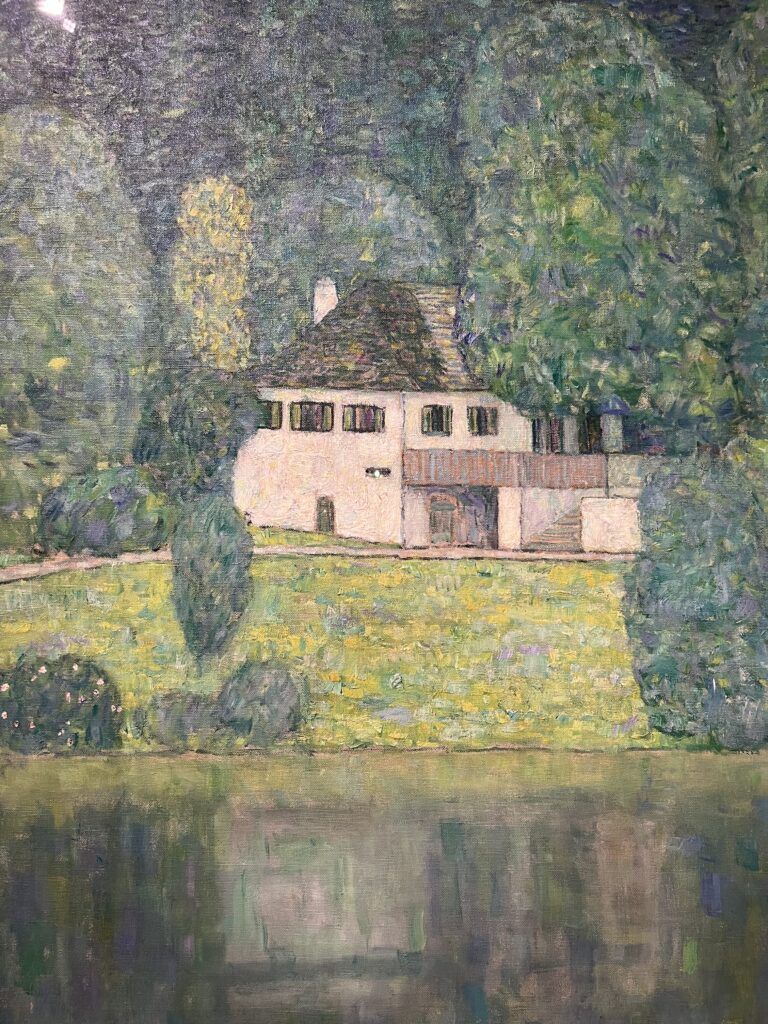
4. Klimt’s Landscapes
Although Klimt is most well known for his golden portraits like The Kiss, his landscapes make up 25% of his painted oeuvre. Like the French Impressionists, he created the paintings outdoors, without preliminary sketches.
This genre doesn’t have any narrative or symbolic elements. Rather, Klimt’s aim was to depict nature as magical, calm, and independent from humanity.
Many of his landscapes come from a time when he was Attersee, when his desire for privacy peaked after the rejection of his faculty paintings.
Most of his landscapes are in a square format. The image space looks two dimensional. He is still focused on ornamentation, using colorful decorative patterns.
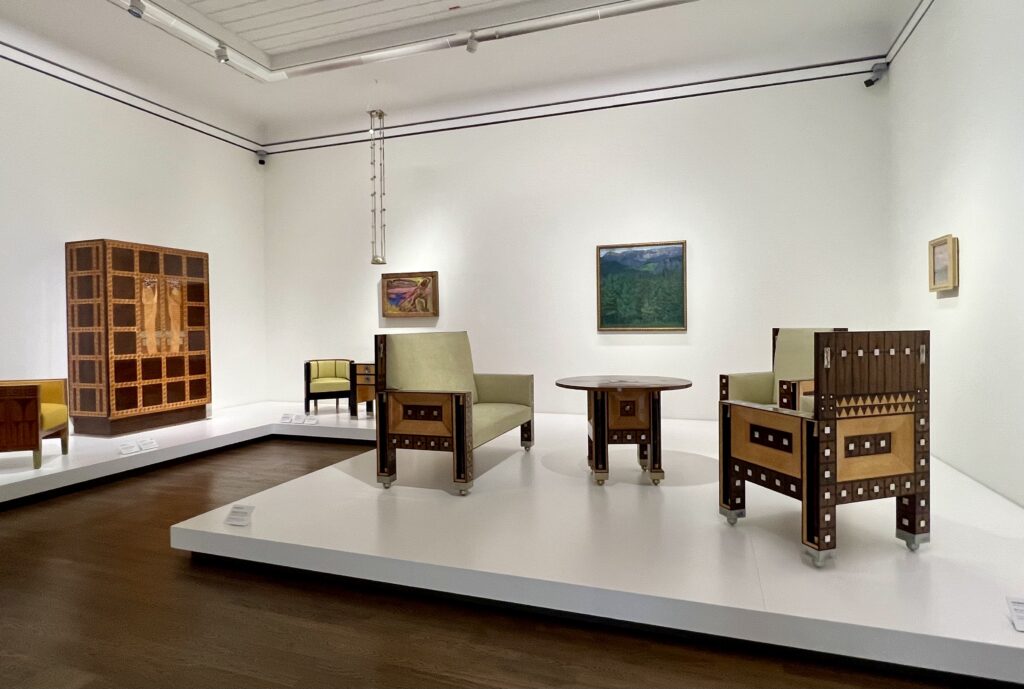
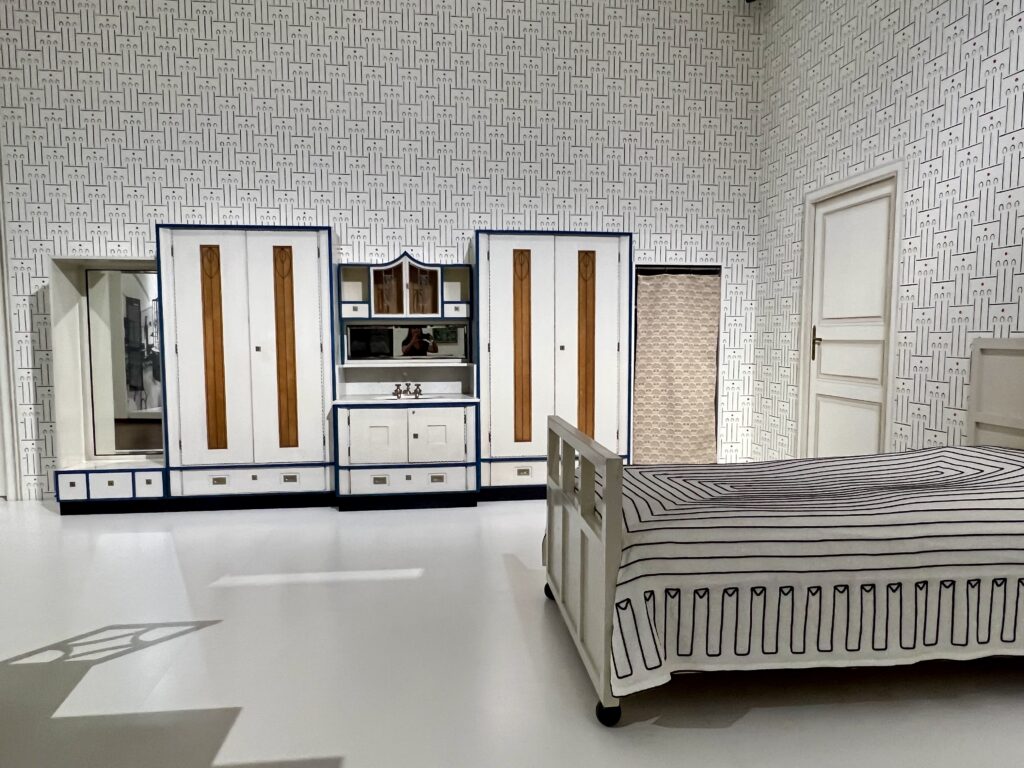
5. Secessionist Furniture
The museum has many examples of Secessionist furniture — even entire rooms — designed by prominent figures such as Josef Hoffmann, Koloman Moser, and Otto Wagner.
These pieces exemplify the movement’s commitment to craftsmanship and functional design.
The furniture has clean lines, geometric shapes, and innovative use of materials. It reflects the movement’s departure from historical ornamentation in favor of modern simplicity and functionality.
You’ll also see prieces by Adolf Loos. He was opposed to the Secessionist style. Instead, he focused on geometric simplicity and eschewed any ornamentation.
I saw quite a few visitors striding quickly through these rooms. But I found them fascinating. They give a glimpse into Secessionist theory, which aimed to produce a “total work of art, craft, and design” or Gesamtunstwerk.
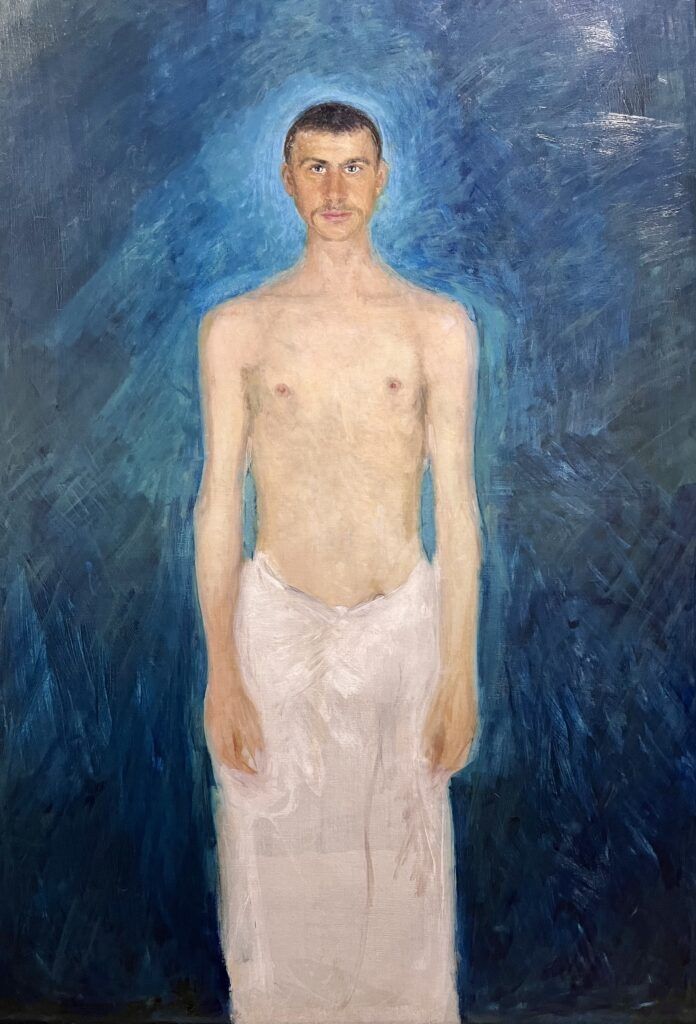
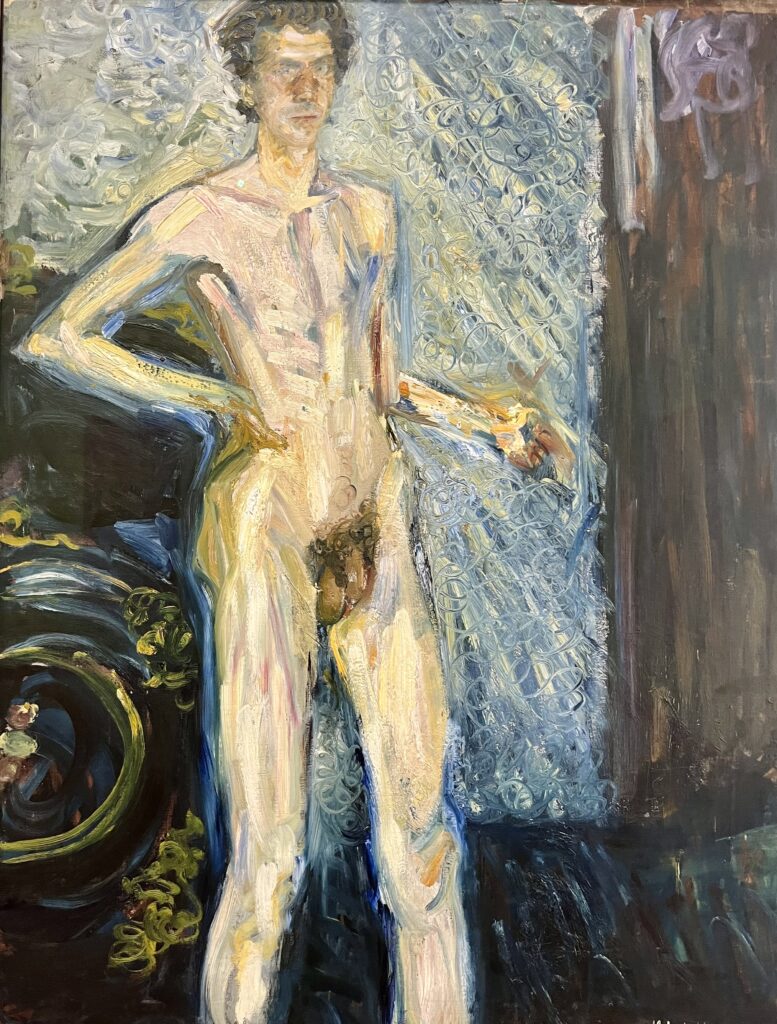
6. Richard Gerstl Self-Portraits
Gerstl had a brief but influential artistic career during the early 20th century. His work is often associated with Expressionism, and he was influenced by Vincent Van Gogh and Edvard Munch. His insightful works are characterized by vivid colors and emotional intensity.
Gerstl had a short life, hanging himself at just age 25. Mathilde Schoenberg, the wife of the composer, had broken off their affair.
During his lifetime, Gerstl was unknown. But today he is famed for his emotionally charged paintings, particularly his self-portraits.
Semi Nude Self-Portrait (on the left in my photo above) is one of the artist’s earliest and most radical self portraits. He presents himself as an apparition, vulnerable against a blue background. Though his face looks confident, he is utterly solitary.
In his taboo-breaking Self-Portrait from 1908, Gerstl shockingly portrays himself fully exposed, with a mixture of self-fascination and self-disgust. His body is streaked with white and blue tones. He killed himself just 8 weeks after finished the painting.
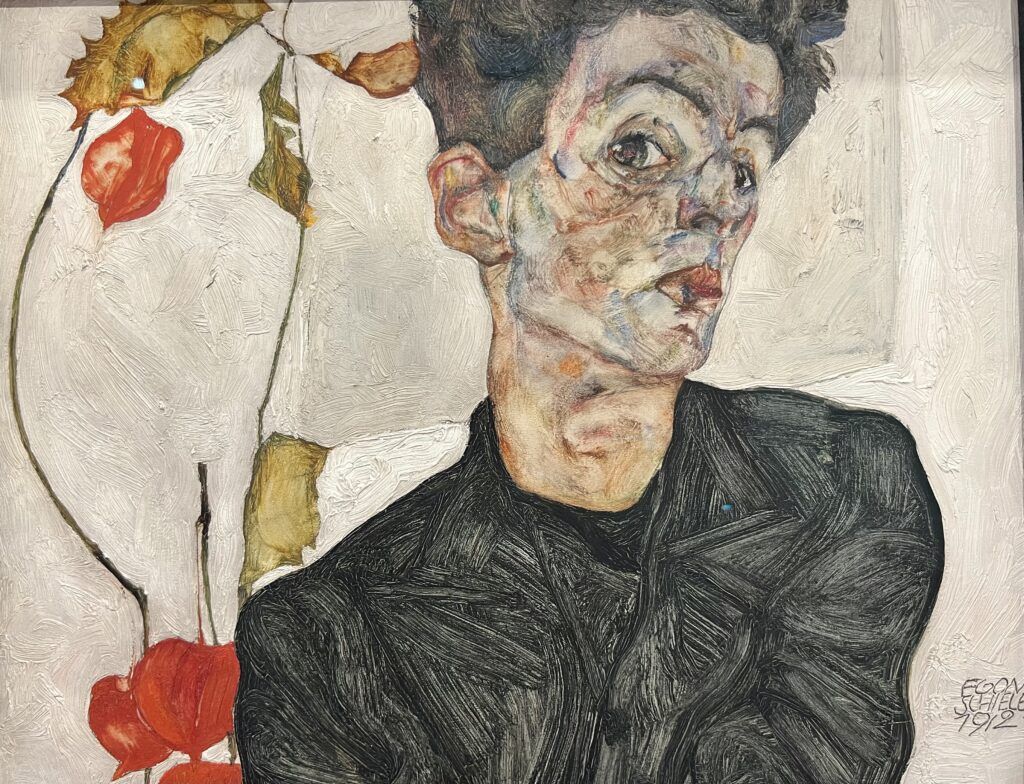
7. Egon Schiele, Self-Portrait and Portrait of Wally
Egon Schiele and his works are the highlight of the museum. Schiele was a leading figure of Expressionism in the early 20th century. In 1910, he turned his back on the Secession and pursued his own distinctive brand of art.
Schiele was known for his provocative and intensely emotional artworks. His style often featured distorted and angular figures, exploring themes of sexuality, mortality, and the human psyche.
Schiele painted these two famous half length portraits as a pair. One is a self-portrait and one is a portrait of Schiele’s long time partner, Wally Neuzil. (He eventually ditched her to marry someone more socially acceptable.)
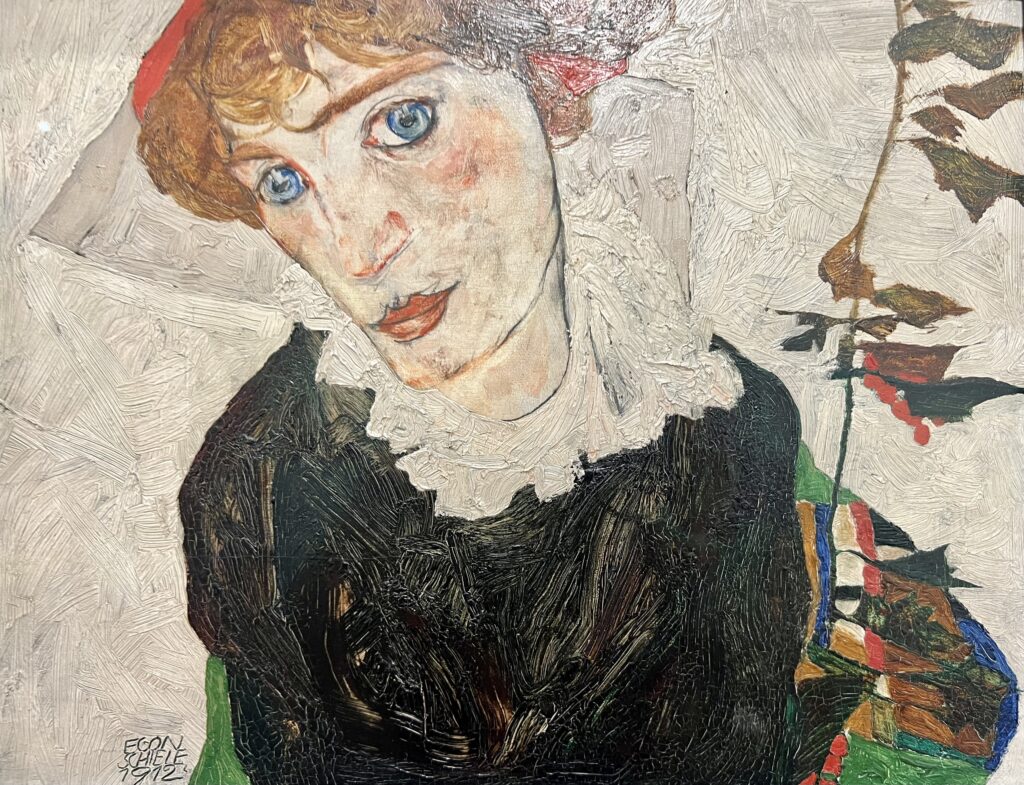
Both works balance tension and calm, using geometric shapes and harmonious combination of colors. The pair exude intimacy and affection, testifying to their close bond.
There’s a lot of controversy around the Portrait of Wally. A Jewish art dealer had been forced to turn over her gallery and the painting to the Nazis during WWII.
Later, she sued demanding restitution of the stolen artworks. The litigation was settled, with the Leopold Museum paying $19 million to compensate the family and retain the painting.
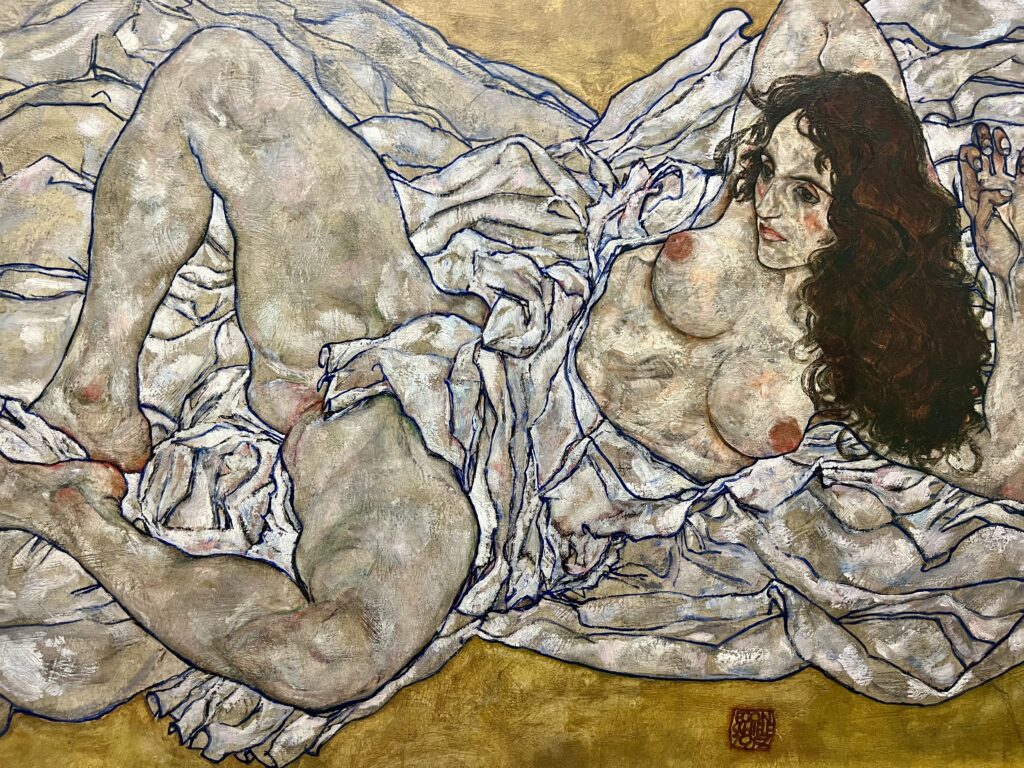
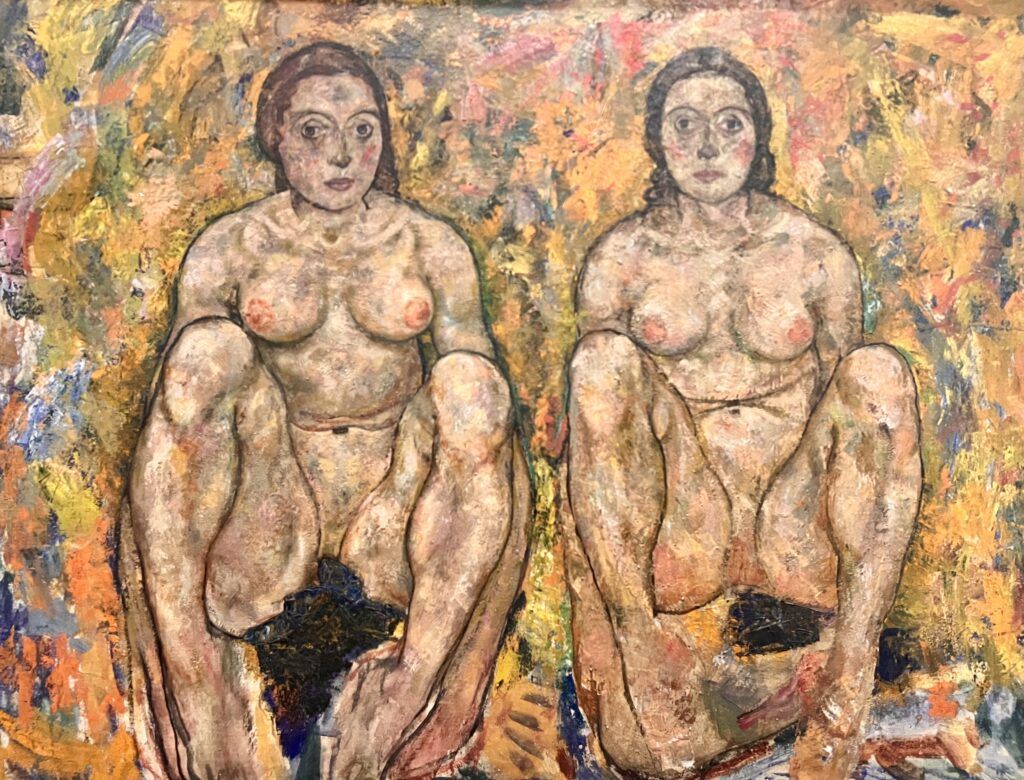
8. Egon Schiele Nudes
Schiele’s nudes are among his most iconic and controversial works. The artist was known for his daring exploration of the human form.
He painted over 200 self-portraits, many of them nude. But he also was fascinated by the eroticized female body.
His unapologetic nudes are characterized by their frank and explicit depiction of the human body.
They often featured contorted and distorted figures that challenge conventional notions of beauty and propriety. Their positioning was explicit, putting the focus on their anatomy.
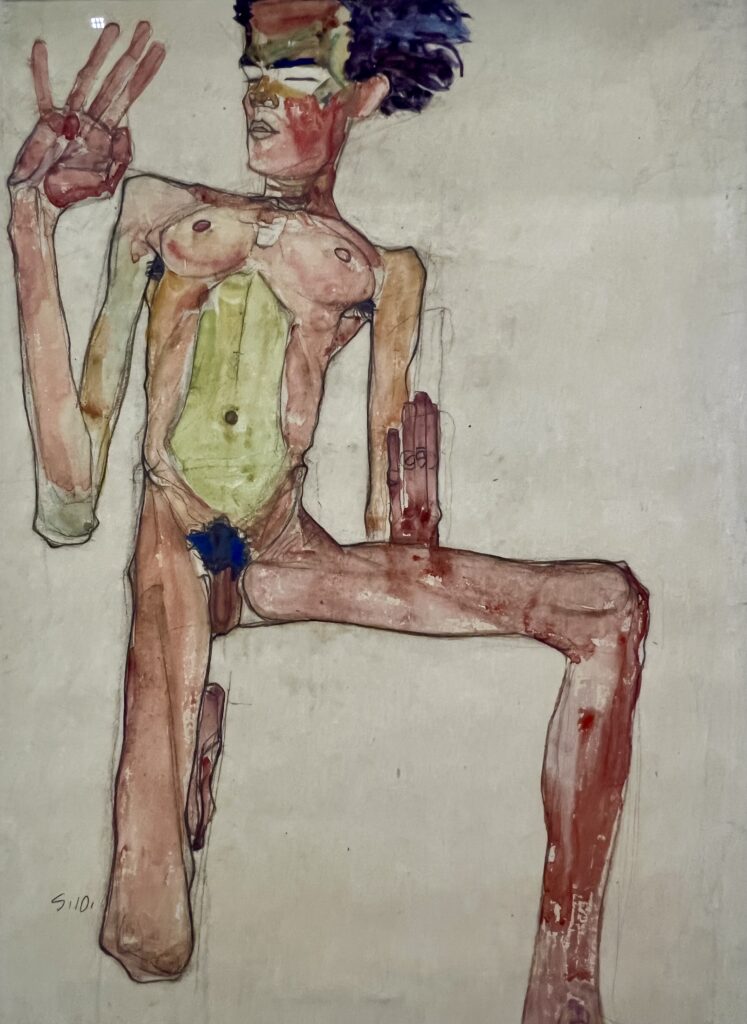
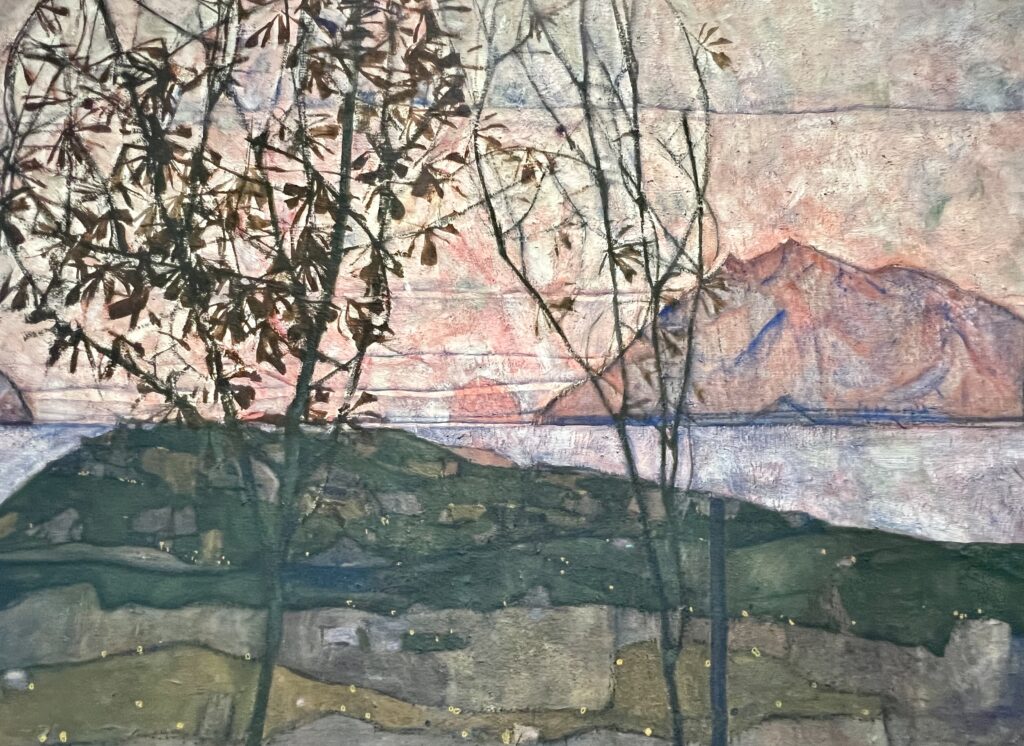
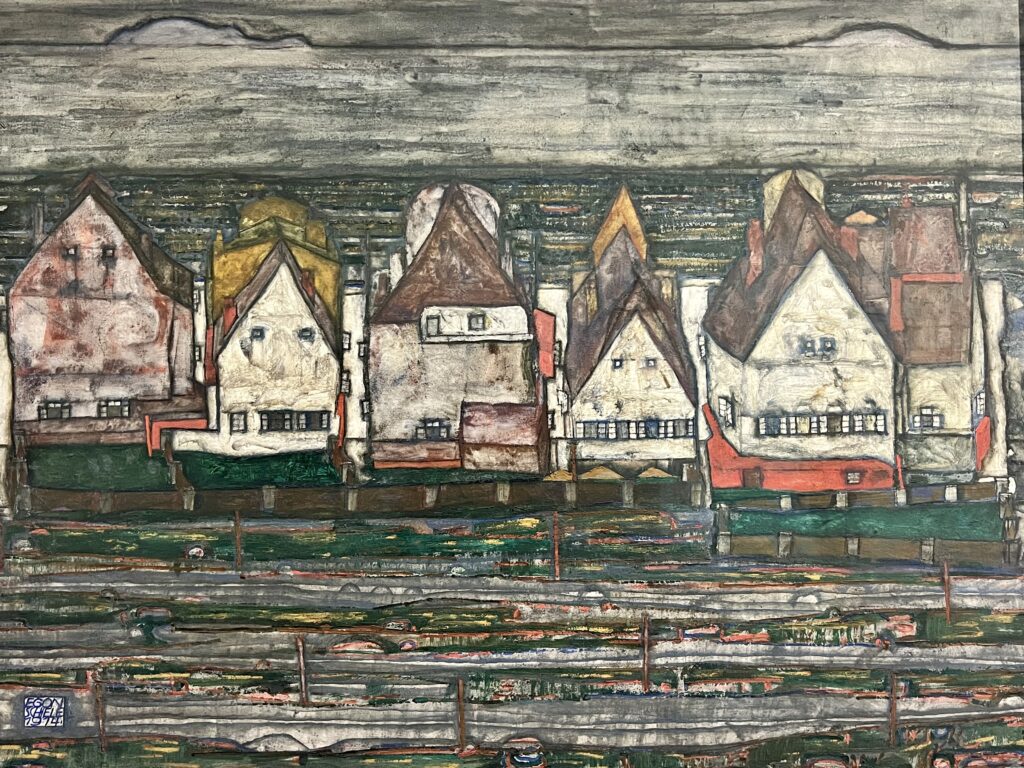
9. Egon Schiele Landscapes & Cityscapes
When not acutely focused on the individual human body, Schiele painted landscapes and cityscapes.
He was never interested in capturing reality. Rather, he wanted to show the “soul” of the landscapes.
Schiele viewed his landscapes as a break from the chaos of the city of Vienna and its art scene.
Houses by the Sea (above right) was another painting looted by Nazis from Jenny Steiner. As with the Portrait of Wally, the museum compensated her heirs.
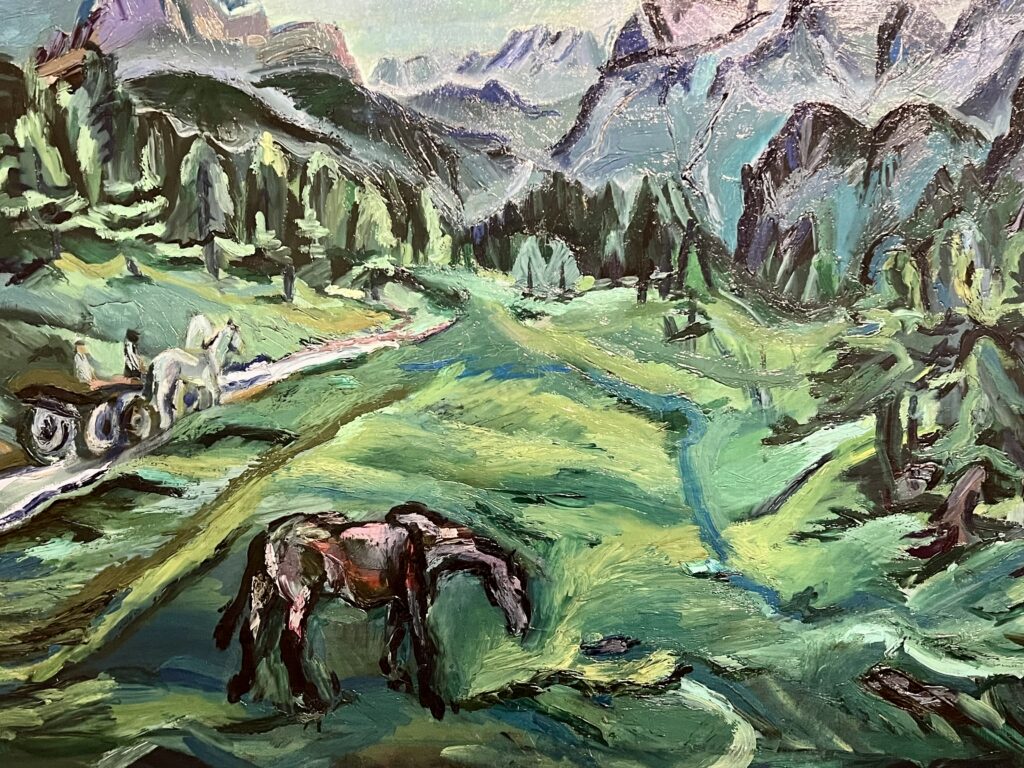
10. Oscar Kokoshchka Paintings
Oskar Kokoschka was a leading Expressionist painter, playwright, and graphic artist of the 20th century.
Kokoschka was for his emotionally charged and psychologically intense works. His art often delved into the complexities of human relationships, inner turmoil, and the impact of war on the human psyche. It was considered “degenerate” art in the Nazi era.
The painting above was made when Kokoschka was entangled in a passionate affair with Alma Mahler, the composer’s wife. It was a prolific period of his career.
The painting is a charged, dramatic scene. Saturated shades of blue and green are punctuated with purple elements.
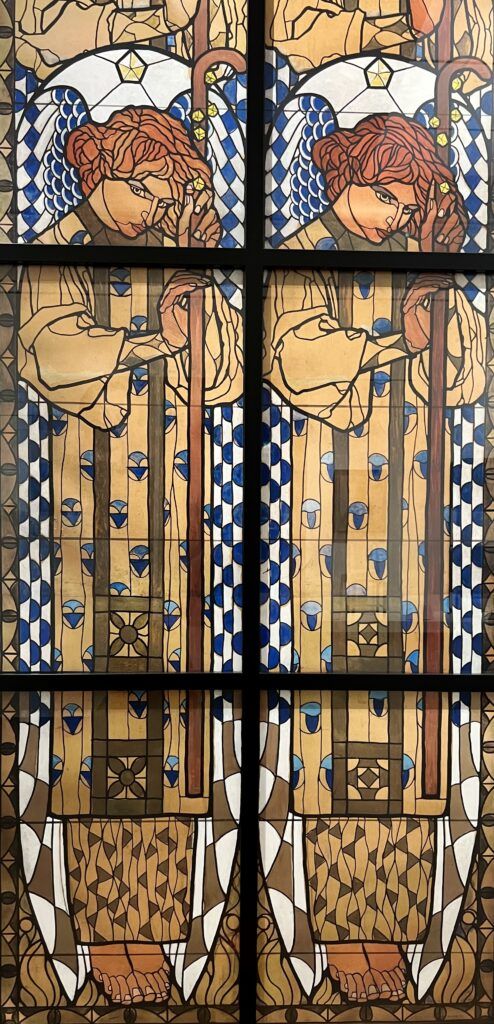
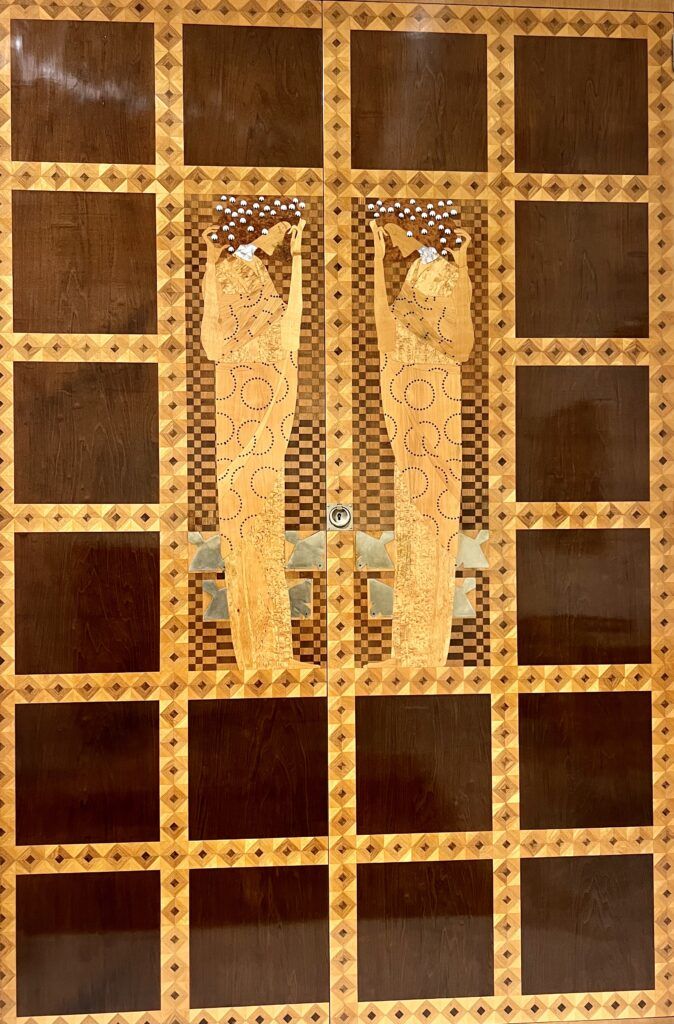
Practical Guide & Tips For The Leopold Museum
Here are some must know tips for visiting the museum.
Address: Museumplatz 1. The closest subway station to the museum if Volkstheater Station on the U2 and U3 lines.
Hours: Wednesday through Monday open from 10:00 am to 6:00 pm. Closed Tuesday.
Ticket Price:
Adult tickets are € 15.00. Click here to pore-book a ticket. The audio guide is € 4. You can also book a guided tour of the collection.
Admission is included in the Vienna Pass, which I highly recommend getting if you plan to see a lot of attractions over a few days.
Pro Tips: If you like the Leopold Museum’s artworks and exhibits, you may want to visit the MAK Museum and the Belvedere Palace.
How Long To Spend:
I think you should plan to spend 2 hours at the Leopold Museum. Longer if you are using the audio guide and/or want to stop in the cafe.
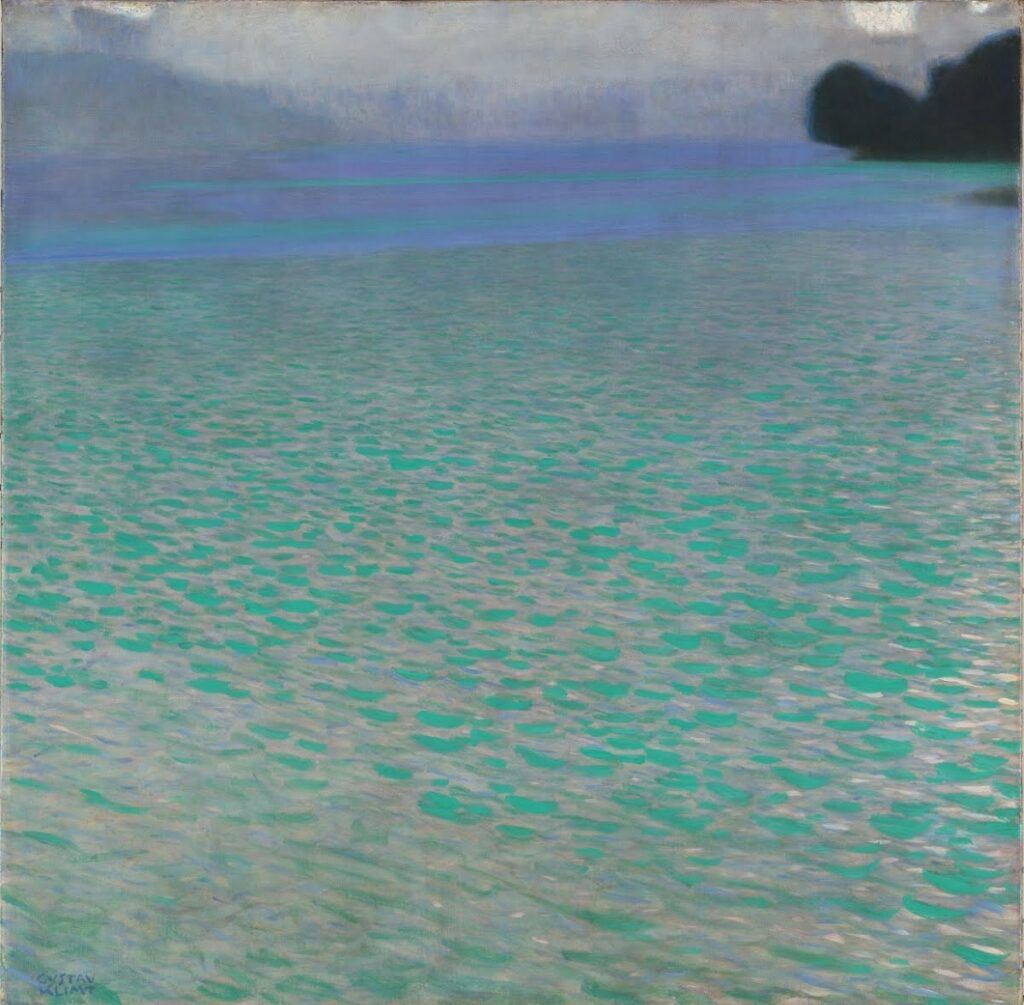
Leopold Cafe: The cafe is a hybrid spot, part bar and part restaurant, in a pretty modern setting. There is a mix of Austrian and Asian food on the menu.
I hope you’ve enjoyed my guide to the Leopold Museum. You may find these other Vienna travel guides and resources useful:
- 3 days in Vienna itinerary
- guide to the Belvedere Palace
- guide to Klimt paintings in Vienna
- guide to the Beethoven trail in Vienna
- what to do in Vienna in winter
- best museums in Vienna
- guide to the Sisi Museum
- guide to the Kunsthistoriches
- guide to the Vienna Secession
- guide to the Albertina Museum
- guide to the Freud Museum
- guide to the Secession Museum
- guide to St. Stephen’s Cathedral
If you need a guide to the Leopold Museum, pin it for later.

